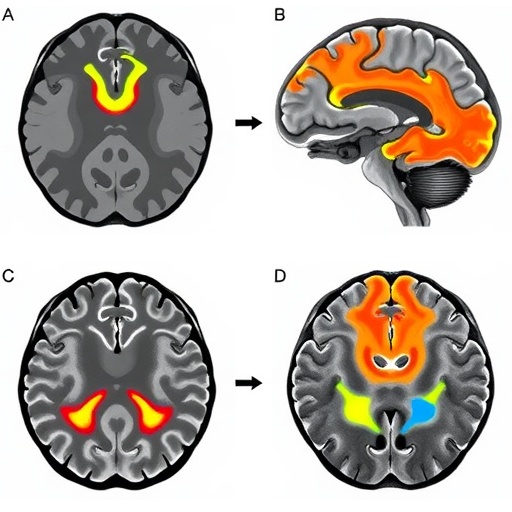Unlocking Potential: How Movement Skills Can Transform Children with Autism
In recent years, the spotlight has turned toward understanding autism spectrum disorders (ASD) and exploring methods that can enhance the quality of life for affected children. A groundbreaking study conducted by researchers Wang, Jia, and Ding sheds light on how fundamental movement skills practice may improve executive functioning and social interaction abilities in children diagnosed with moderate autism. This randomized controlled trial builds on the increasing interest in the intersection of physical health and psychological well-being for individuals with autism, offering promising insights into intervention strategies.
The motivation behind this research stems from the challenges that children with autism often face in daily life, particularly when it comes to social interactions and executive functioning tasks. Executive functions encompass a range of cognitive processes, including working memory, flexible thinking, and self-control, all of which are crucial for navigating social situations and adhering to daily routines. The researchers aimed not only to assess the impact of movement skills practice but also to understand the broader implications for improving the everyday lives of children with ASD.
The study enrolled a cohort of children with moderate autism, a group known to experience significant difficulties in both social engagement and executive functions. Through engaging in a structured program designed to enhance fundamental movement skills, the children were encouraged to participate in activities such as running, jumping, and catching. These skills are the building blocks of larger physical activities, promoting not only physical health but also cognitive and social development.
The randomized controlled trial design is a gold standard in research, reducing bias and providing reliable data that can inform future interventions. Participants were systematically assigned to either the movement skills practice group or a control group that did not engage in the structured activities. This design enabled researchers to draw definitive conclusions about the efficacy of movement interventions on the children’s cognitive and social outcomes.
Data collection involved pre- and post-intervention assessments aimed at measuring changes in both executive function and social interaction capabilities. The researchers employed standardized assessment tools that evaluate these cognitive domains, ensuring that the results would reflect genuine improvements attributable to the movement skills practice. The outcomes were not only anticipated but were hoped to also empower parents and educators with knowledge about effective strategies for supporting children with autism.
Early results from the study were revealing and encouraging. The children who engaged in the movement skills practice demonstrated significant improvements in executive function compared to those in the control group. Enhanced abilities in areas such as task initiation, working memory, and self-regulation were noted, suggesting that physical activity may be a conduit for developing essential cognitive skills. This link between physical and cognitive development is a crucial finding that supports the integration of movement into therapeutic practices for children with autism.
Additionally, the social interaction abilities of the participants who practiced movement skills showed notable enhancement. They exhibited greater willingness to engage with peers, improved cooperation during group activities, and an overall increase in communicative behaviors. These transformed interaction patterns point to the potential of physical activities as a socializing agent, helping children with ASD not only develop their motor skills but also foster meaningful connections with others.
Moreover, the significance of these findings cannot be overstated. With the prevalence of autism diagnoses on the rise, innovative strategies to improve the quality of life for children on the spectrum are urgently needed. This research not only adds to the existing literature but also advocates for a multifaceted approach to therapy that integrates physical activity as a core component of autism interventions.
The implications of this study extend beyond the immediate effects observed in children. As parents and caregivers witness tangible improvements in their children’s executive function and social skills, the overall anxiety and stress levels associated with managing autism may decrease. Furthermore, schools and community organizations that adopt such movement-focused interventions could cultivate environments that nurture both physical health and emotional well-being.
Challenges do remain, particularly when it comes to implementation on a broader scale. Educators and therapists may require specific training to effectively carry out movement skills programs. Additionally, ongoing research is critical to refine these techniques and assess long-term impacts on both cognitive and social competencies.
As the research community continues to explore the intricate connections between physical activity and cognitive function, additional studies will be vital to substantiate these findings further. Future investigations could examine not only different age groups but also varying levels of autism severity, allowing researchers to tailor interventions to specific needs.
In conclusion, the study led by Wang et al. serves as a beacon of hope for many families navigating the complexities of autism. By highlighting the effects of fundamental movement skills on executive function and social interaction, this research opens avenues for innovative therapeutic strategies that can reshape the lives of children with autism. It is a reminder of the profound impact of movement—not just on our bodies but on our minds and social connections as well.
The potential benefits of integrating structured physical activity into therapeutic regimens may well transcend the limits of this study, providing a foundation for future ventures aimed at fostering holistic development. As we stand at the intersection of physical health and psychological growth, the challenge remains to harness this understanding, ultimately creating more inclusive environments for children with autism to thrive in a social world.
Subject of Research: The effects of fundamental movement skills practice on executive function and social interaction ability in children with moderate autism.
Article Title: Effect of fundamental movement skills practice on executive function and social interaction ability in children with moderate autism: a randomized controlled trial.
Article References:
Wang, Q., Jia, S., Ding, F. et al. Effect of fundamental movement skills practice on executive function and social interaction ability in children with moderate autism: a randomized controlled trial.
BMC Complement Med Ther 25, 354 (2025). https://doi.org/10.1186/s12906-025-05107-2
Image Credits: AI Generated
DOI: 10.1186/s12906-025-05107-2
Keywords: autism, fundamental movement skills, executive function, social interaction, randomized controlled trial.
Tags: challenges faced by children with autismcognitive processes in autismdaily life skills for autistic childrenenhancing quality of life for children with ASDexecutive function improvement in autistic childrenfundamental movement skills practiceintervention strategies for autismmovement skills and autismphysical health and psychological well-beingrandomized controlled trial on autismresearch on autism spectrum disorderssocial interaction strategies for autism





